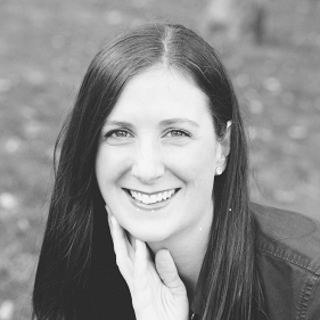
A piece of corn. I rounded out my second mile, my feet hitting the pavement, sidestepping a few pieces of corn spilled on the sidewalk. And with it, spilled forth the memory of a single kernel of corn, this one found in the stomach of a one-year-child. Now a mother of three, I only had one child in that stage of training when I rotated through the medical examiner's office. I assisted with autopsies, stepping out between cases to pump breastmilk for my young baby.
Training in Internal Medicine and Pediatrics, I was used to death. As an Internal Medicine resident on the wards, we ran codes daily, frequently calling families with the news that a loved one passed away. By contrast, in Pediatrics training, kids rarely coded or died in the hospital. One day, however, I had to call the mother of a premature baby in the neonatal intensive care unit to let her know that we had coded her child—pressing on his chest and placing a tube in between his ribs to release the air that was shriveling his lung. The baby survived, but this was one of the few days I cried in residency. Pediatric codes are thankfully rare. Things like that shake you. Kids are not supposed to die or even come close.
The majority of autopsies in the medical examiner's office that month were adults, but there were two children. The case that day was a baby not much older than my own son. He had suffocated while sleeping. I will never forget his pajamas—the image has been seared into my memory. It was hot and he had on shorts and a t-shirt. There was a sports logo embroidered on his chest and his chubby toddler legs peeked out from under the bottoms. Part of an autopsy is an examination of the deceased person's stomach contents. I will never forget those kernels of corn.
This little boy has been on my mind with recent reports showing an increase in suffocation deaths for those children in New York State who are involved in the Office of Children and Family Services, which includes those in the foster care system or involved with Child Protective Services. The Centers for Disease Control (CDC) reports that 3,500 babies nationwide are lost to sleep-related deaths each year. This is astounding, especially when you consider last flu season we lost 185 children total to influenza. The CDC 2015 Pregnancy Risk Assessment Monitoring System (PRAMS) data showed half of the mothers surveyed reported any co-sleeping, 40 percent placed their baby to sleep on their stomach or side, and 20 percent used soft bedding.
As a pediatrician, my job is to counsel families on safe sleep practices. This is a vital part of all infant well child checks. I tell parents that the biggest dangers to the health of their child in the first few months of life are infections and unsafe sleep environments. The American Academy of Pediatrics recommends all babies sleep on a flat surface that is close to but not in the same bed as their adult caregivers and with nothing loose that could cover their face: nothing soft, no blankets, no big stuffed bumpers, no stuffed animals. As a parent, I recognize the exhaustion on your face. I get it. Sometimes sleeping with your baby seems like the only way you will ever close your eyes again. I also know that there are many well intentioned people who raised their children when guidelines were different telling you to put the baby to sleep on their belly or to cover them with a blanket. Please don’t. The evidence is clear and it’s not worth the risk.
I can never erase the memory of this beautiful life lost too soon, and I hope that in sharing this story, I can prevent this heartache for other families.
Dr. Lauren Kuwik is a Medicine/Pediatrics physician as well as a 2018–19 Doximity Author.
Image: PLotulitStocker / shutterstock







